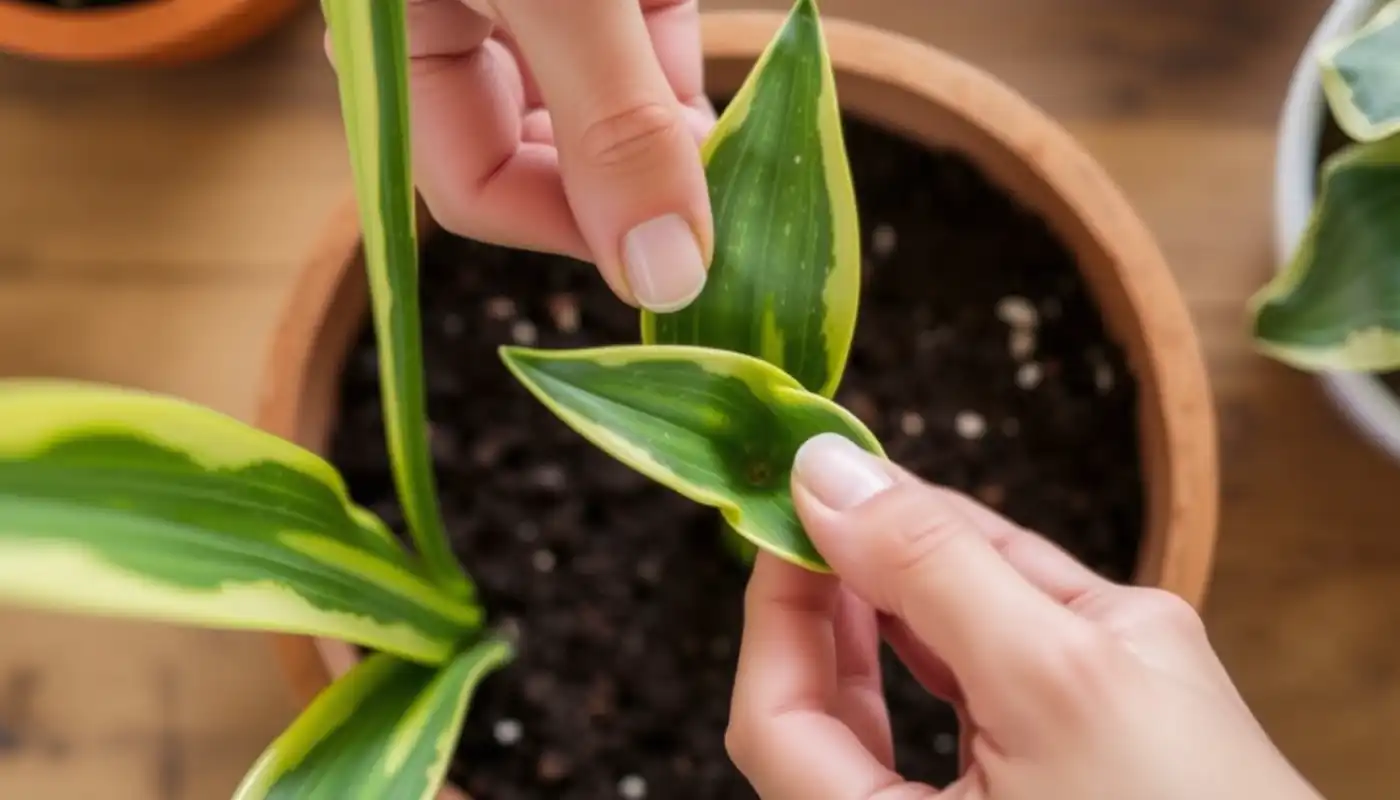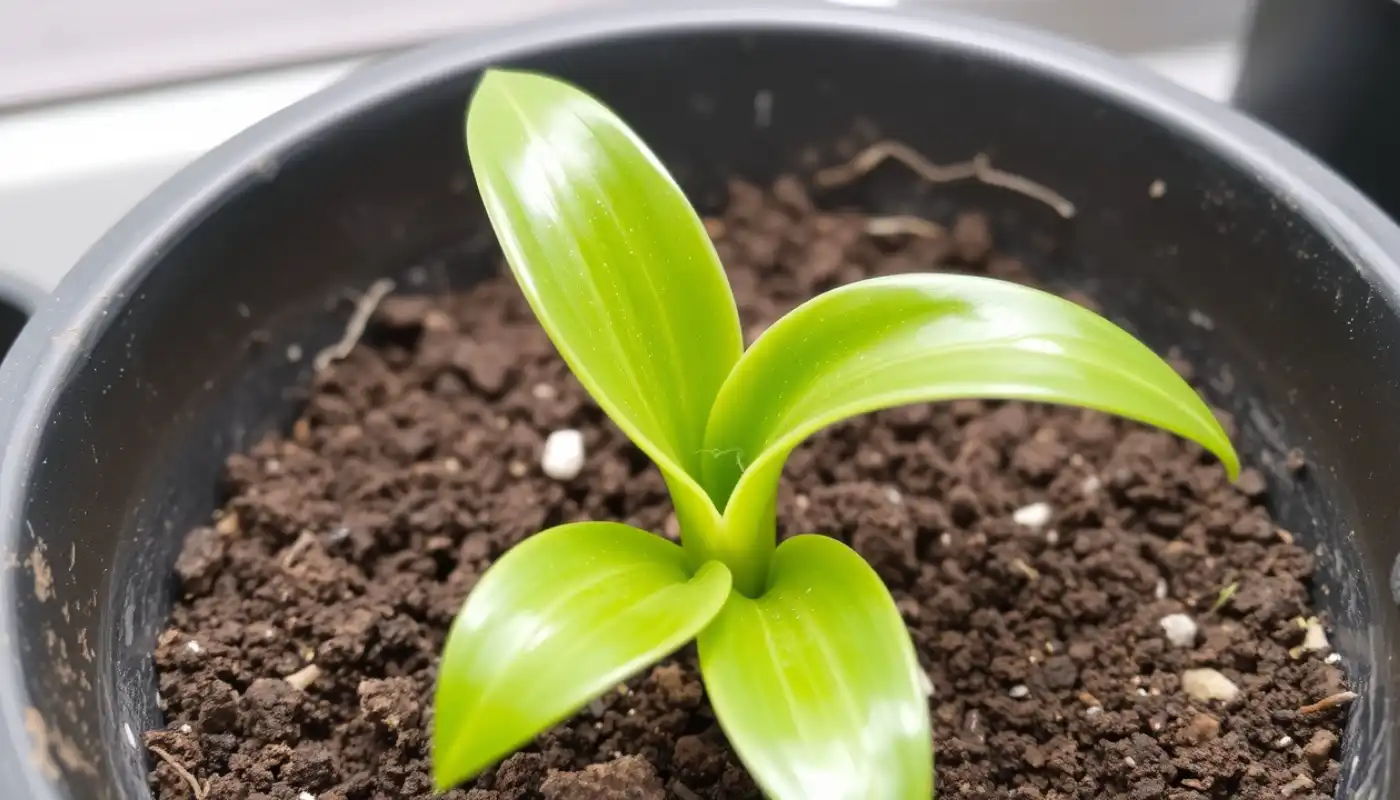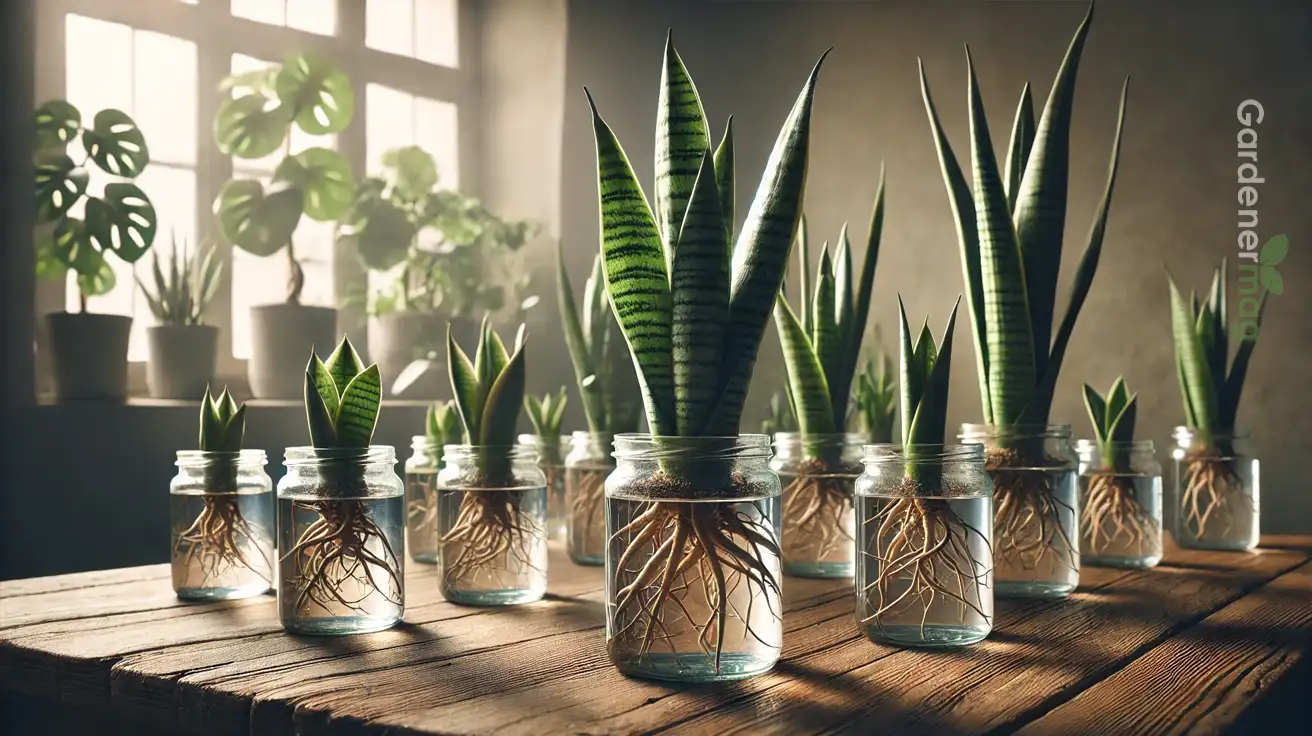Do you have some Snake plants in your garden and are looking for ways to propagate them? Snake plants, also called sansevieria, are easier to propagate than you think. In this post, you will learn how to propagate Snake plant and and generate new plants at no cost.
A Quick Introduction To Snake Plant
Snake plant (Dracaena trifasciata), is a popular succulent houseplant. It comes in different varieties, which include Sansevieria cylindrica and Sansevieria moonshine.
Snake plants prefer temperatures ranging between 21°C to 32°C (70°F to 90°F) and thrive in bright, indirect light in a warm place.
This air-purifying plant requires low maintenance and can tolerate low light conditions. It is tolerant to dry, tropical climates, and its unique foliage shape gives it the nickname “Mother-in-Law’s Tongue.”
Snake plant is one of the easiest houseplants to grow through propagation. This means gardeners can easily create numerous small plants from one parent.

However, if you are new to the process, follow the simple steps below to achieve the desired result.
How To Propagate Snake Plant: 3 Sure Ways
Before you start the propagating process, make sure that you have healthy leaves or seeds and the right tools – a pruner or a sharp knife, potting soil, and water.
Plant Propagation by Division

This is the best, easiest, and fastest way to propagate Snake plants that have grown into multiple clusters. More so, new leaves will retain the variegation of the original plant.
To get started, gently uproot an entire cluster of Snake plants. Make sure that the roots are intact.
Using a pruner or a sharp knife, carefully separate the tightly tangled root clump and their accompanying leaves into sections, ensuring that each section has at least three rhizomes/leaves.
Plant each section in a well-draining pot filled with moist potting mix. Place the pot in bright but indirect light. Water the planted section thoroughly, and subsequently water the potting mix whenever it feels dry to the touch.
Plant Propagation by Rhizome Division

This method is very similar to the one discussed above, but only the rhizomes are divided without the accompanying leaves – the mother plant is left intact.
Uproot your plant and locate the rhizomes near the root clump. Gently cut off two or three rhizomes from the root clump.
Before planting the rhizomes in their individual pots, wait a day or two to allow them to callus. This will prevent root rot. A callus is a soft tissue that is formed over a cut plant surface as it heals.
Just like method one above, this method aids faster propagation and retains the variegation of the original plant.
Although these two methods are faster and help to retain the plant’s variegation, they require you to entirely uproot the parent plant. If not done carefully, this can damage the plant.
If you know you can’t be careful enough, try these two other methods:
Plant Propagation by Leaves

Amazingly, Snake plants can also be propagated by their leaves using soil or water. When we said Snake plants are easier to propagate than you think, we meant it.
Plant Propagation by Leaves Using Soil
To propagate a Snake plant by its leaf using soil, simply cut off a single leaf at the base of an established plant, close to the soil line.

Carefully cut the snake plant leaf again horizontally into two equal parts and mark the bottom of each cutting. Leave them to callus for a day or two before planting them individually into a well-draining pot filled with moist potting mix.
If available, dip the cuttings in rooting hormone to stimulate root growth and prevent rot. You can also cut a ‘V’ shape on the bottom of the cutting to give them a greater surface area for roots to grow.
After about two months, your plant should have an established root system. Gently lift the plant cuttings and notice if you feel any resistance.
If yes, the cuttings now have their own root. Otherwise, remove and replant them, ensuring that the potting mix does not feel dry.
Plant Propagation by Leaves Using Water
This method follows a similar procedure as the propagation using soil above. However, it requires the mature part of the leaf, and instead of dipping the plant cuttings directly into the potting mix, they are placed in a jar of water.

The water must cover about 25% of the plant cutting for success. Keep the water jar with the cuttings in sufficient indirect sunlight, and change the water weekly.
Once you see the roots sprouting, transfer the cuttings into the pot.
An advantage that this snake plant propagation method has over the propagation using soil is that the root growth is visible.
Important note: When you propagate sansevieria by leaf cuttings, the unique foliage patterns may be lost in the new plants. That means new plants may not have variegations, such as mottled leaves or gold leaf margins.
Also, aside from container gardening, you can grow your Snake plants on raised garden beds or in-ground gardens.
How to Propagate Snake Plant – Conclusion
As you have seen in this post, Snake plants are easy to propagate, and propagation can be done through various methods.
This post has explained how each method is done, and we hope it has also helped you to choose the method that best suits you. Happy propagating!
Frequently Asked Questions (FAQs)
The fastest and best method to propagate Snake plants is through division – mother plant division or rhizome division. This method aids in rapid development, and the new plant retains the qualities of the mother plant.
Both methods of propagation are good, and choosing either of them depends on your choice and environmental factors. However, propagation using water is faster, but the new plants may be exposed to the risk of transplant shock. Meanwhile propagation using soil takes a longer time, but it aids stronger roots.
Yes, you must allow the leaf cutting to dry if you are propagating by soil. However, if you are propagating by water, you may not need to let the snake plant cuttings dry.






